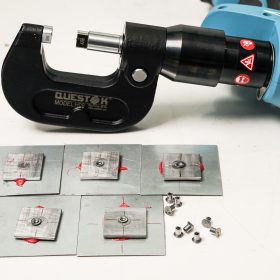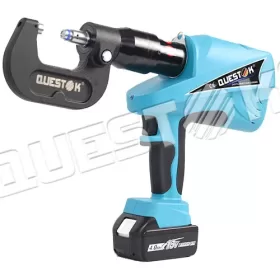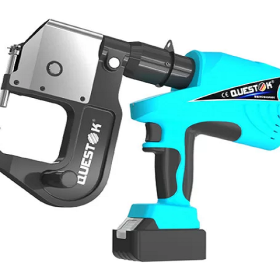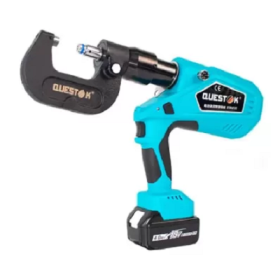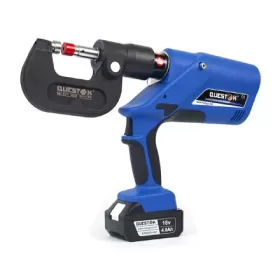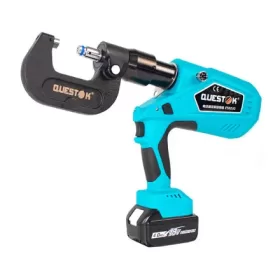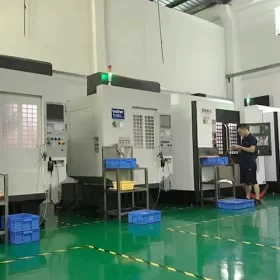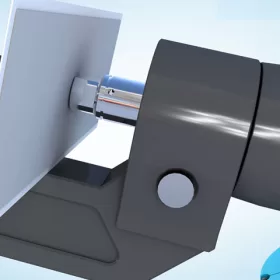Mastering the Art of Clinching Guns in HVAC
Clinching is a critical process in HVAC installation, ensuring secure and efficient ductwork connections. Mastering the art of clinching guns is essential for HVAC professionals to deliver high-quality results. This comprehensive guide will delve into the intricacies of clinching gun operation, providing insights and best practices to achieve optimal performance.
Understanding Clinching Guns
Clinching guns are specialized tools that utilize a squeezing action to mechanically attach one metal sheet to another. In HVAC, these tools are used to create airtight seams in ductwork, joining sheet metal panels without the need for fasteners. Understanding the different types and capabilities of clinching guns is crucial.
Types of Clinching Guns
There are two main types of clinching guns:
Manual Clinching Guns: These guns are operated by hand and require significant force to create the clinch. They are suitable for smaller projects or occasional use.
Pneumatic Clinching Guns: These guns are powered by compressed air and offer greater force and speed, making them ideal for large-scale ductwork installations.
Essential Components of Clinching Guns
The key components of a clinching gun include:
Upper and Lower Dies: The dies create the clinch by interfacing with the metal sheets. Selecting the appropriate die sizes and shapes is essential for proper clinch formation.
Plunger: The plunger is the moving component that applies force to the dies, squeezing the metal sheets together.
Trigger: The trigger activates the plunger and initiates the clinching process.
Clinching Technique and Best Practices
Mastering the clinching technique is crucial for effective ductwork fabrication. Here are some best practices to follow:
Proper Die Alignment: Misaligned dies can result in weak or uneven clinches. Ensure that the upper and lower dies are properly aligned before starting the clinching process.
Sheet Metal Preparation: Clean and deburr the metal sheets to remove any contaminants or imperfections that could interfere with the clinch.
Correct Force and Speed: Adjust the clinching gun’s force and speed settings to match the thickness and material of the metal sheets being joined. Excessive force can damage the sheets, while insufficient force will result in weak clinches.
Consistent Pressure: Apply even pressure throughout the clinching operation to create a uniform and secure clinch.
Inspection and Quality Control: Regularly inspect the completed clinches to ensure they meet specifications and provide a leak-proof seal.
Troubleshooting Clinching Gun Issues
Common issues encountered with clinching guns include:
Weak Clinches: Check the die alignment, plunger force, and sheet metal preparation.
Uneven Clinches: Inspect the dies for damage or misalignment.
Metal Tearing: Adjust the clinching force or use a larger die size.
Stuck Plunger: Ensure the gun is well-lubricated and that there is no debris obstructing the plunger’s movement.
Conclusion
Mastering the art of clinching guns in HVAC is essential for creating secure and efficient ductwork connections. By understanding the different types of clinching guns, their essential components, and following best practices, HVAC professionals can ensure high-quality results. Troubleshooting common clinching gun issues will also minimize downtime and maintain optimal performance.
- Company News
- Industry News
- Tag
- Tags
-
The Advantages of Questok Rivet Guns: Precision, Efficiency, and Durability
In industrial fastening applications, the choice of tools directly impacts productivity, safety, and long-term cost-effectiveness. Questok rivet guns have emerged as a standout solution for professionals across aerospace, automotive, and construction sectors. Combining advanced engineering with user-centric design, these tools deliver unmatched performance. Below are the key advantages that make Questok rivet guns a preferred choice:
-
Rivet Gun FAQ
Rivet Gun FAQ-SPR
-
Fast Assembly and Repair With Cordless Solid Rivet Gun
Questok cordless solid rivet gun stands out as a pivotal innovation, merging portability with power to facilitate efficient and effective fastening in a myriad of applications.
-
Redifine The Role of Self-piercing Riveting Gun Machine
Self-piercing riveting adopts high-speed mechanical fastening skill that joins thin sheet materials, typically steel and aluminum alloys.
-
The Latest Innovations in Clinching Tool Design
Explore the latest innovations in clinching tool design, redefining precision, efficiency, and versatility in material joining.
-
The Application and Maintenance of Self-Piercing Rivet Guns
Delve into the applications of self-piercing rivet guns in the automotive and aerospace industries and reveal the essential maintenance practices that ensure their accuracy and efficiency.
-
Rivetless Riveting Gun for Ventilation Duct Projects
The ventilation duct rivetless gun is a tool for riveting ventilation ducts without rivets.
-
Guide to Using Self-Piercing SPR Riveting Gun
In the automotive industry, self-piercing SPR (Self-Piercing Rivet) riveting guns are commonly used for joining metal components in vehicle bodies, including BMW vehicles.
-
Rivet Gun FAQ
Rivet Gun FAQ-SPR
-
Versatile Fastening- Applications of the Handheld Rivet Gun Across Industries
In the realm of fastening, the handheld rivet gun stands as a testament to ingenuity and versatility. Its ability to effortlessly join materials with sheer strength and permanence has revolutionized manufacturing and construction processes, leaving an enduring mark on diverse industries. Aerospace: Where precision and reliability are paramount, the rivet gun shines. In aircraft assembly, […]
-
Time-Saving Tools- Speeding Up Projects with Electric Blind Rivet Guns
In the whirlwind of project deadlines, every minute counts. But what if there was a tool that could dramatically reduce assembly time, giving you an edge in the race against the clock? Enter the electric blind rivet gun: your secret weapon for lightning-fast and effortless riveting. Electric blind rivet guns are the ultimate time-savers for […]
-
Streamlining Fastening- How an Electric Blind Rivet Gun Enhances Efficiency
Introduction In the realm of manufacturing and assembly, fastening plays a crucial role in securing components and ensuring structural integrity. Traditional manual rivet guns, while reliable, are often time-consuming and labor-intensive. The advent of electric blind rivet guns has revolutionized the fastening process, significantly enhancing efficiency and productivity. This article delves into the benefits of […]
-
Top Trends in Electric Rivetless Clinching Guns
In the realm of fastening technology, electric rivetless clinching guns have emerged as a revolutionary solution for a wide range of industrial applications. These advanced tools offer several преимущества and capabilities, revolutionizing the way businesses approach their fastening needs. Adoption of Brushless Motors Brushless motors have gained significant traction in electric rivetless clinching guns due […]
-
Top Features and Benefits of Universal Self-Piercing Riveting Guns
In the realm of metalworking, precision and efficiency are paramount. Universal self-piercing riveting guns, often referred to as self-pierce riveting guns, embody these qualities, offering remarkable benefits for various applications. These innovative tools feature technologically advanced functions that enhance productivity, reliability, and overall performance, making them indispensable in industries such as aerospace, automotive, construction, and […]
-
The Role of Automation in Electric Rivetless Clinching
Electric rivetless clinching (ERC) is a lightweight joining process that eliminates the need for rivets or other fasteners. This can lead to significant cost savings and increased production efficiency. Automation plays a critical role in ERC, enabling high-speed and high-volume production. Automated Feed Systems Automated feed systems are used to accurately position the two workpieces […]
-
Why Choose a Universal Self-Piercing Riveting Gun for Your Projects?
In the realm of construction and fabrication, riveting guns stand as indispensable tools for creating secure and robust connections. Among the various types available, universal self-piercing riveting (SPR) guns have emerged as a game-changer due to their versatility and efficiency. This article will delve into the compelling reasons why choosing a universal self-piercing riveting gun […]
